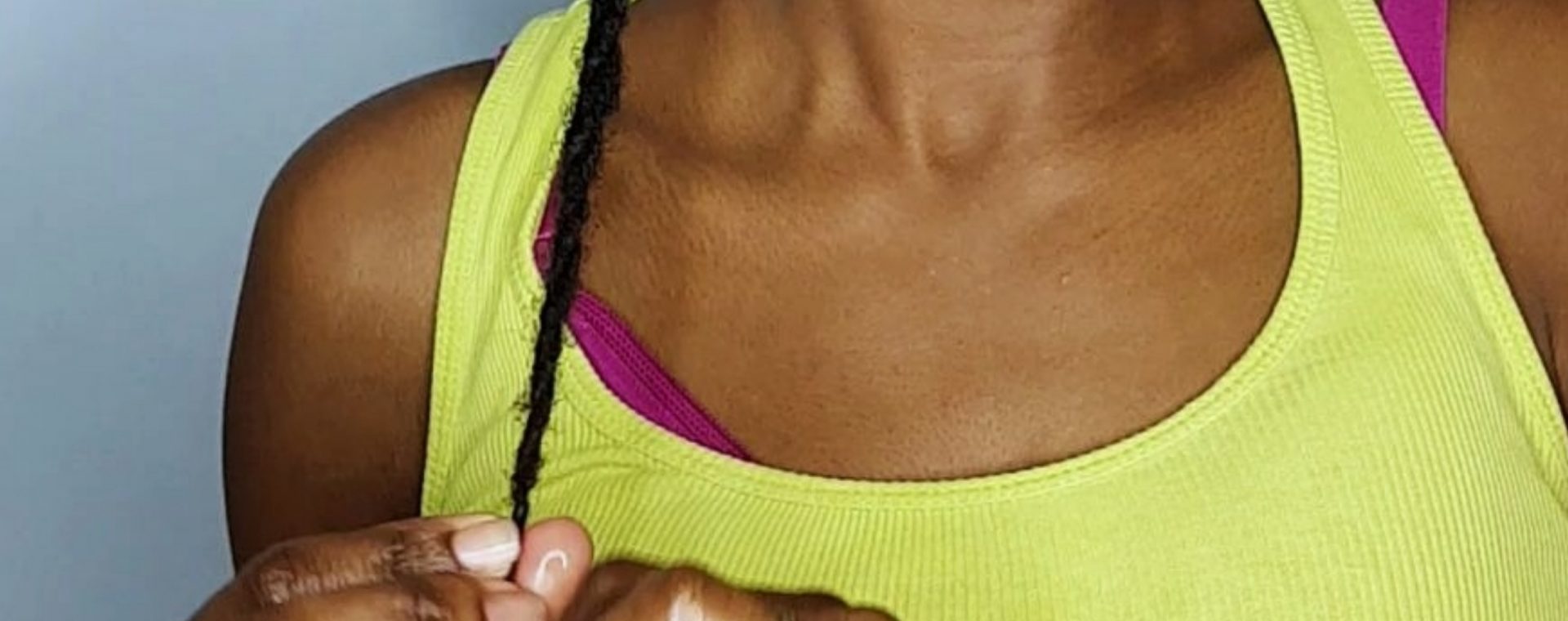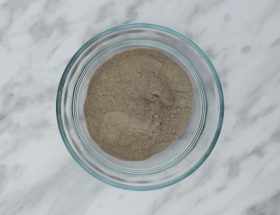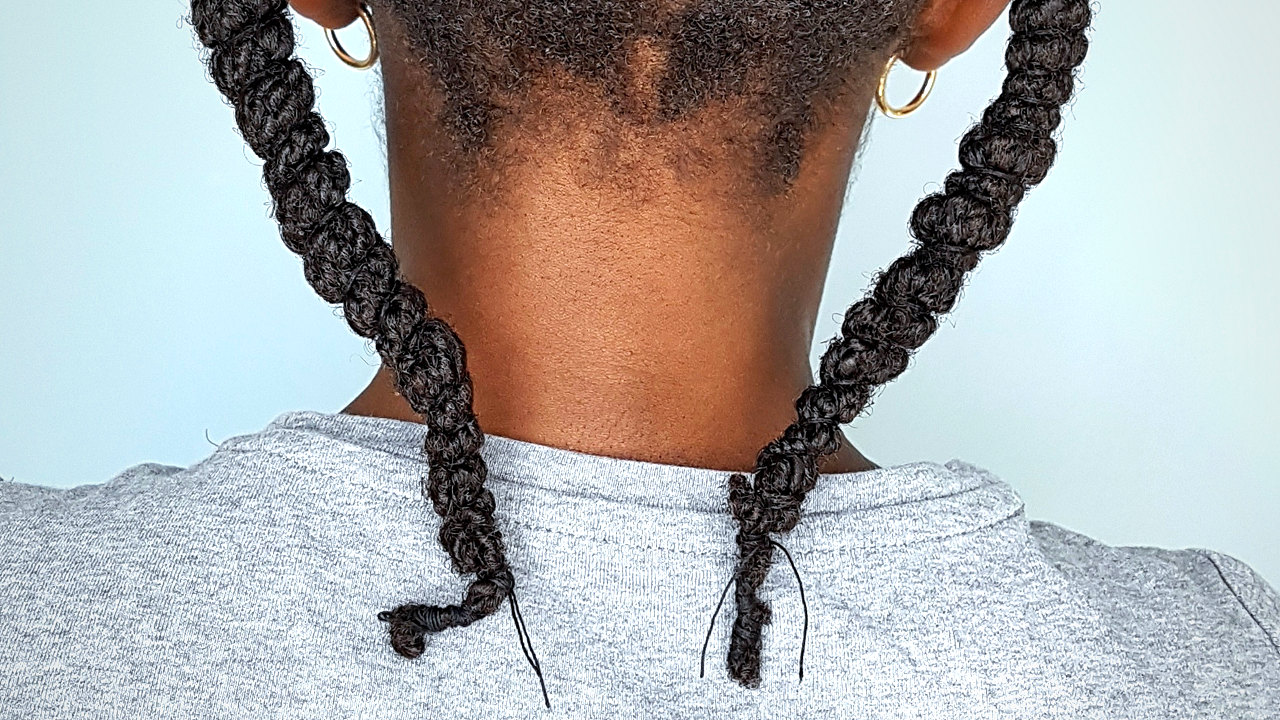Early in my natural hair journey, I realized that I wanted to develop a routine that was simple and easy to follow. I did what I could to learn which products and techniques benefited my hair. Through careful observation, I was able to eliminate unnecessary treatments so that my routine remained streamlined. The results are my three tips for maintaining 4c hair simply.
Doing Too Much
We’re often led to believe that natural hair requires a huge amount of work in order to care for it. We buy, make, and use a large variety of products, tools, and accessories to improve our hair, yet we pay little attention to how our hair reacts to each.
By carefully scrutinizing our methodology, we can pinpoint those things that benefit our hair throughout our journey. Analysis also helps us to eliminate the things that are unnecessary and even detrimental to our progress.
Three Tips for Maintaining 4c Hair Simply
Tip #1: Finger Detangling
Over the years, I’ve adopted the practice of finger detangling. Finger detangling is the process in which you remove knots and shed hairs, and separate your strands using only your fingers instead of a comb or brush. It benefits highly textured hair and is especially beneficial for those with the 4c hair texture.
Finger detangling helps to reduce breakage because it reduces that chance of damage caused by mechanical manipulation. It also allows you to strengthen and nourish your hair by allowing you to warm and spread the natural oils produced by your scalp – your sebum – along the length of your hair.
Tip #2: Trimming Knots
When I detangle my hair, I keep a pair of sharp scissors on hand. I used to pull the knots out of my hair, but this weakens the cuticles, which eventually leads to severe damage along the length of the strand.
Now, whenever I encounter a stubborn knot, I reach for a pair of scissors that I only use for trimming my hair.
Tip #3: Moisturizing
My moisturizing routine has remained pretty consistent over the past seven years:
Before manipulating my hair, I always mist it with a liquid solution that consists mainly of water. This mist spray prepares my hair for finger detangling and finger combing as well as to receive the nutrients of the creams and oils that I later apply.
Next, I apply a cream or lotion to my hair. This step has many benefits that can’t be gained by using only water and/or oil. Due to their water content, I use emulsified solutions to impart additional moisture to my hair. Cream and lotions contain ingredients that have the ability to slow the evaporation of water, which in turn, enables my hair to hold moisture. Cream and lotion moisturizers also contain ingredients that condition and add nutrients to my hair.
The third step is to apply a light oil on top of the first two layers. This step helps to further slow the evaporation of water from the previous layers, keeping my hair moisturized longer.
My final step is one that I only started using at the beginning of this year: I seal all of the moisture in with a heavier oil product – specifically whipped shea butter. Under normal circumstances, my hair reacts poorly to shea. It makes my hair feel hard and crunchy. However, I’ve found that when it’s layered on top of an oil, my hair remains extremely pliable and subsequent finger detangling is much easier to do.
The Benefits of a Streamlined Process
As you can see, my hair care routine requires a few steps and very little products. By streamlining my process, I’ve been able to provide my hair with what it needs by using effective methods and without using a ton of products that add little to no value to the health of my hair.
How efficient is your hair care routine? Have you streamlined your hair care regimen?





Hello Janice.
When you say cream. Do you mean leave in conditioner? If not can you give an example.
As well I will like to know what a light oil is and what a heavy oil is.
Thanks
Hi Lilian, a cream is a water-based product — much like body lotion/cream — but it’s formulated for your hair. When you are looking for a “cream” product for your LOC/LCO method, you want “water” to appear as either the first or second ingredient on the list. A hair cream or lotion can also include a conditioning agent as one of the ingredients. These are often marketed as a “leave-in conditioner”. However, moisturizing creams or lotions do not have to have a conditioning agent in them for them to moisturize your hair.
As for the oils, I would consider castor oil to be heavy. When you pour it, it’s like sludge. It’s not very viscous. A light oil would be something like hemp seed. I’d consider almond oil somewhere in between.
Hey, i have low porosity hair and was thinking of whipping raw Shea butter and coconut oil and use it as a cream, then when I do the Instead of an L.C.O it’d be more like a L.C / L.O, what do you think? Does that work?
I have tried a lot of creams but I still haven’t found a cream that works for me, i end up buying a cream then not using it cause the way my hair responds and I’m kind of tired of that, so I want to make my own DIY cream/ leave in conditioner . With that said, what natural products do you recommend I use to mix my cream?
Thankyou
The only drawback about using shea and coconut oil as a mix is that there is no water, so essentially it’s another O or B. In order for something to be a cream or lotion you need to add water. From my understanding, low porosity hair likes thinner, less occlusive mixtures. So if you bought a cream from the store you’d want to look for something like a hair “milk”, which is like a runny lotion. I use Up North Naturals Go-2 Leave In Hair Milk on my son’s type 3 low-po hair and it works really well (https://www.upnorthnaturals.com/collections/frontpage/products/go-2-hydrating-milk). The same will go for your oils. You’ll want to use something light. Shea butter might be too occlusive — it’s difficult for low-po hair to receive moisture, so if you are placing heavy on top it’s harder for you to continually add more moisture, through the week. You can try a lighter oil such as sweet almond oil or maybe even avacado oil.
On a side note, I’ve noticed that since I started using ayurvedic oils on his hair that he is better to accept and receive moisture. It might be worth looking into.
Hi. Why do you whip the shea butter instead of just using raw shea on your hair. Does it have any specific benefits?
Thanks.
I find that raw shea butter is sometimes too “dense” and hard to spread. By whipping it you can make it fluffier and “looser”. Also, when you whip it, it’s a great way to add the nutrients from other oils so that it is doing double duty.